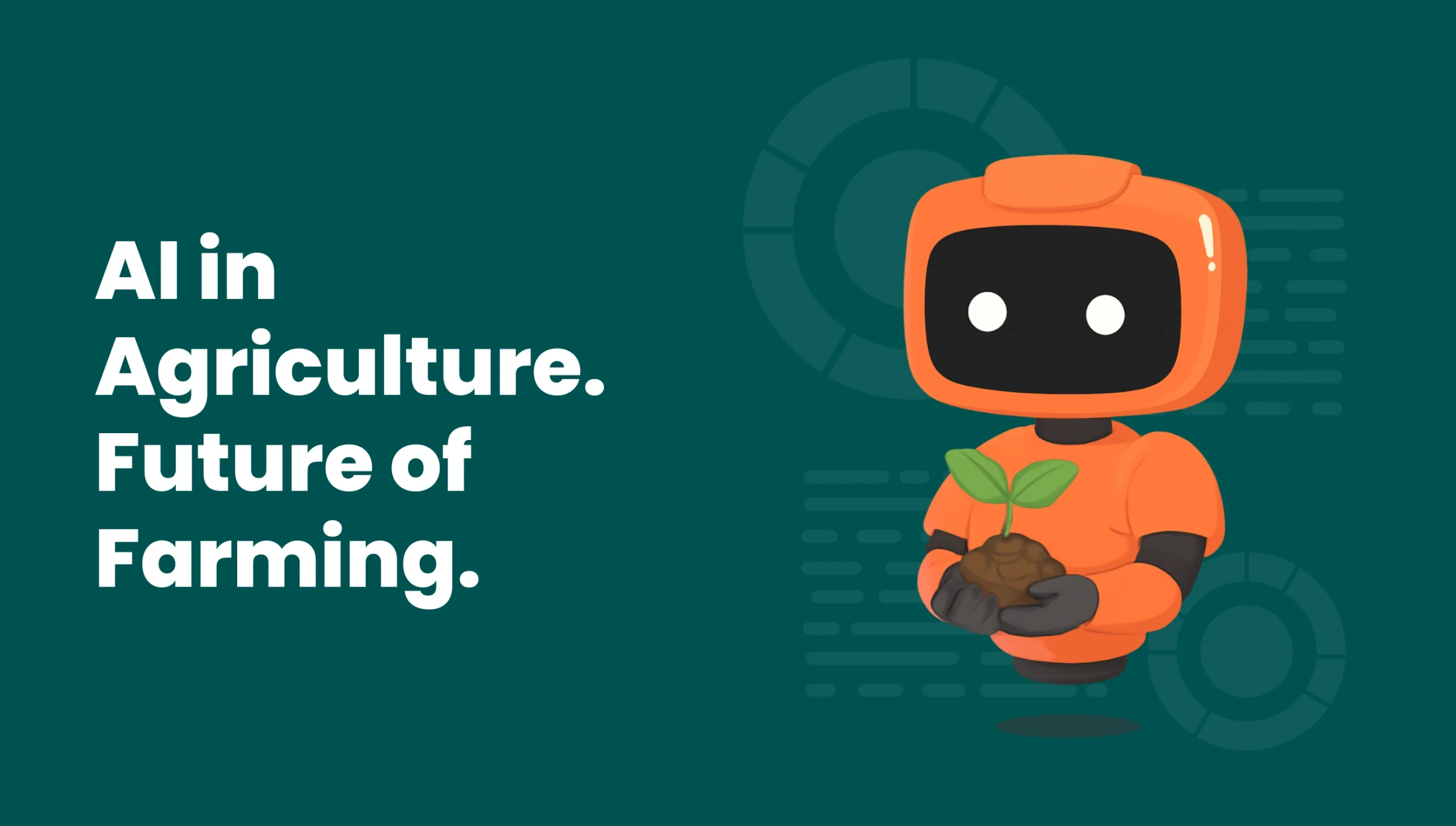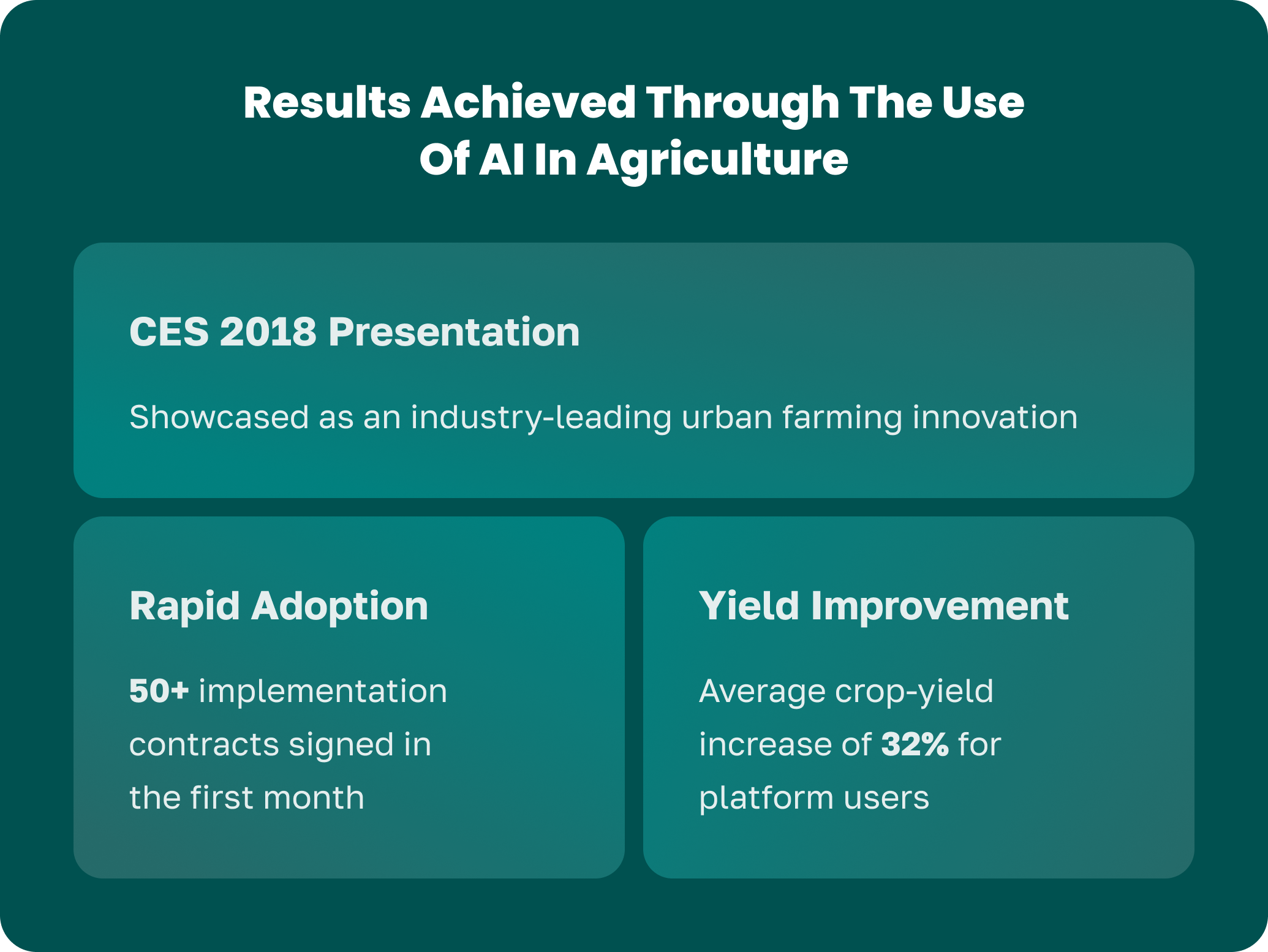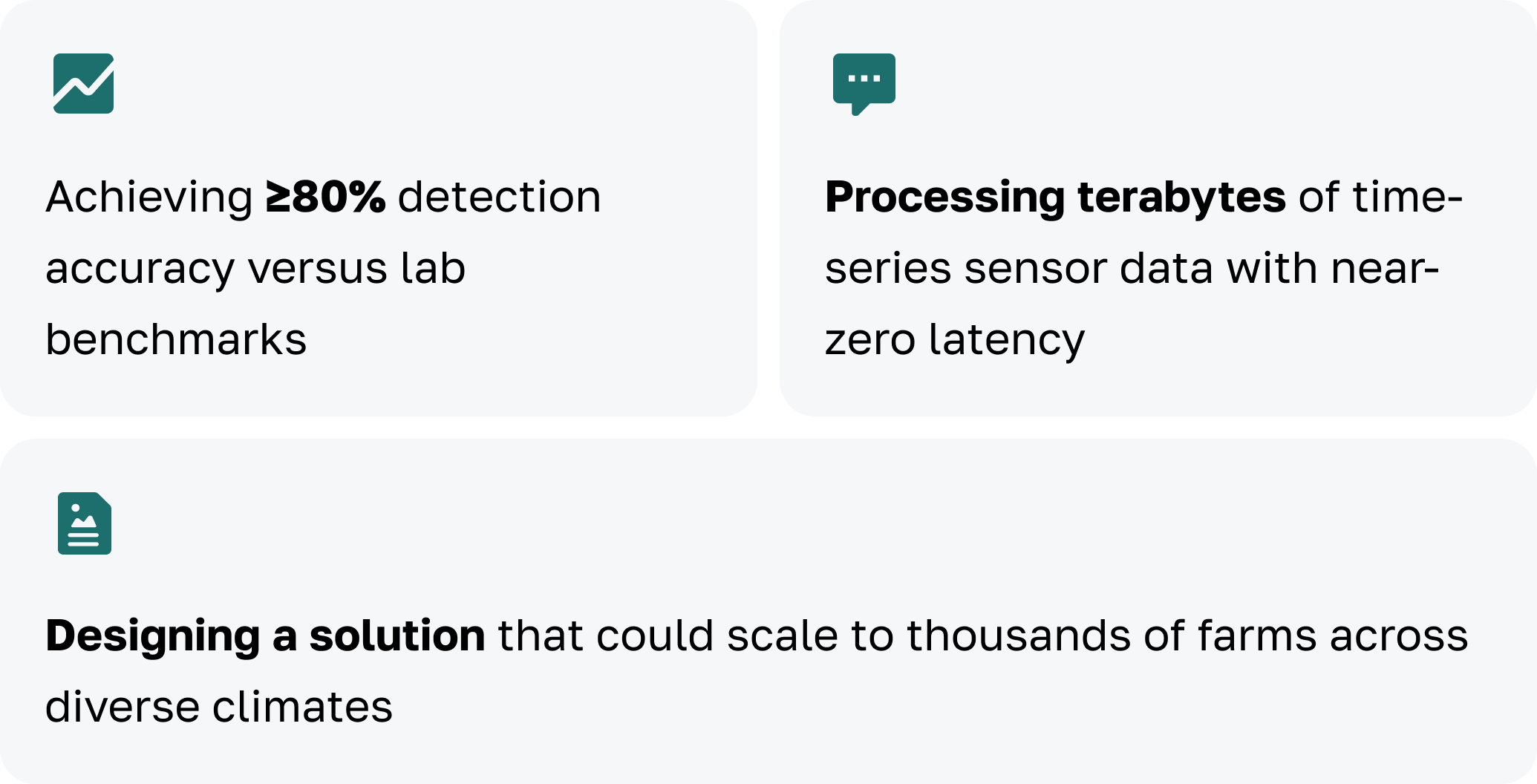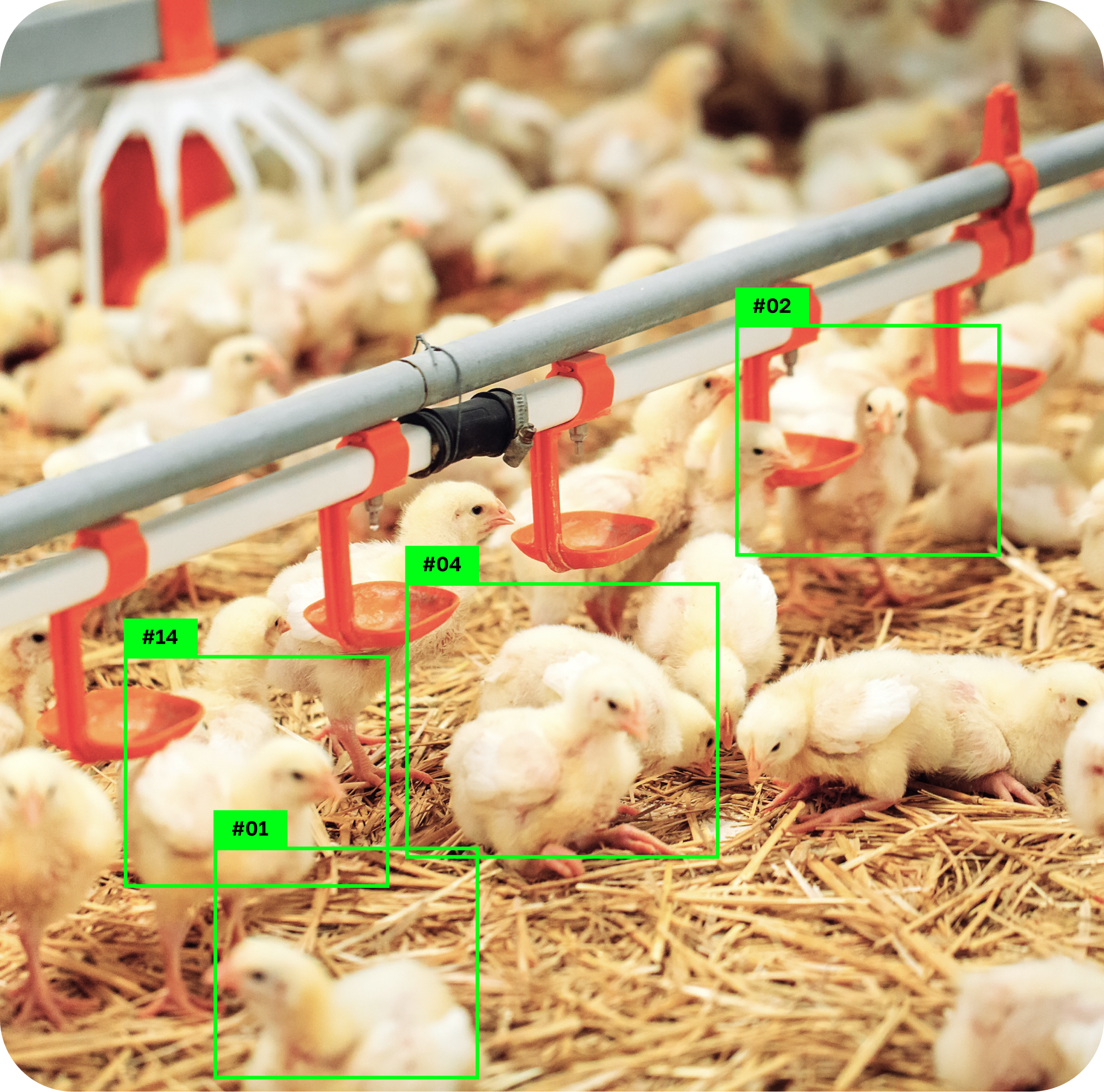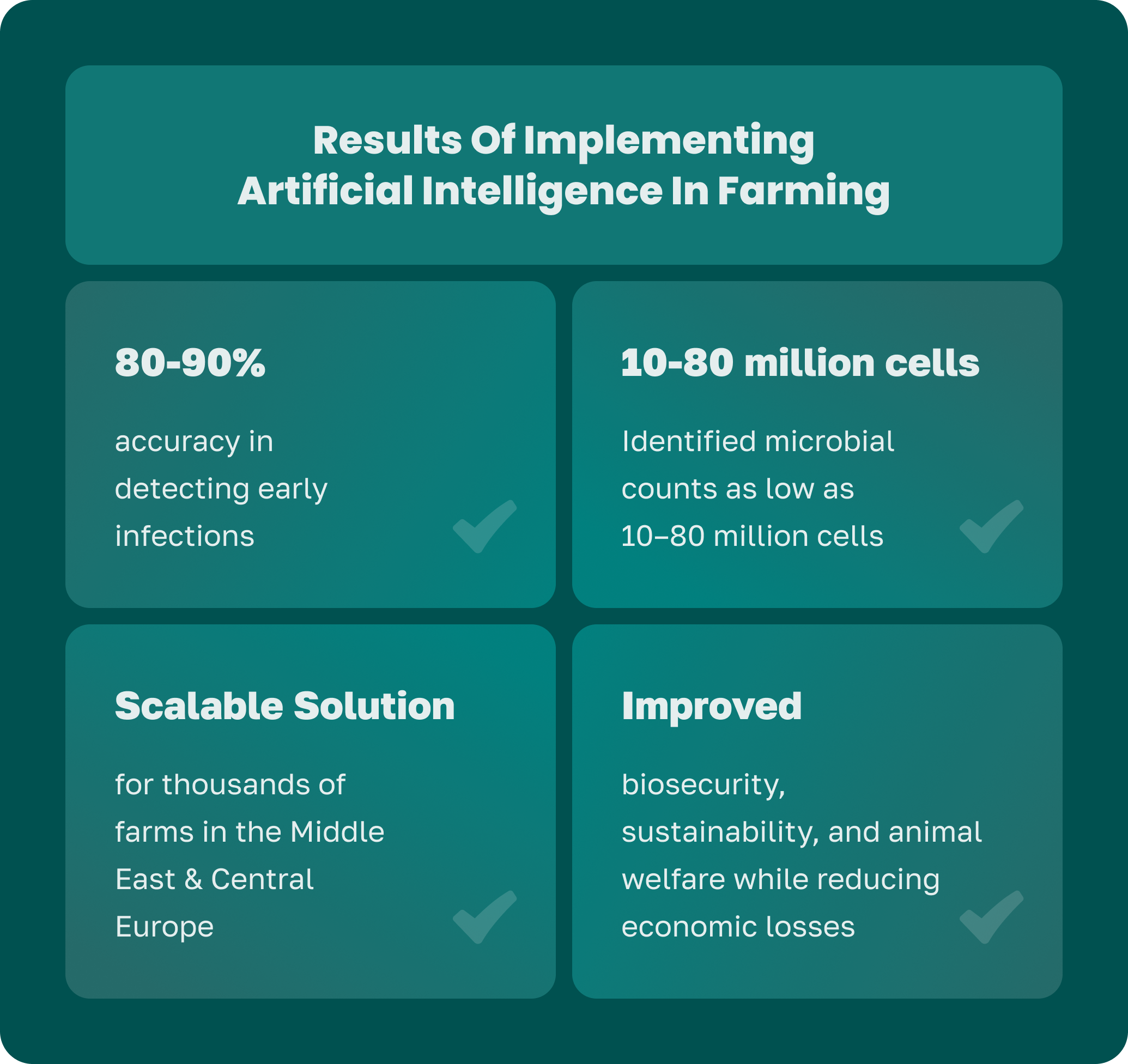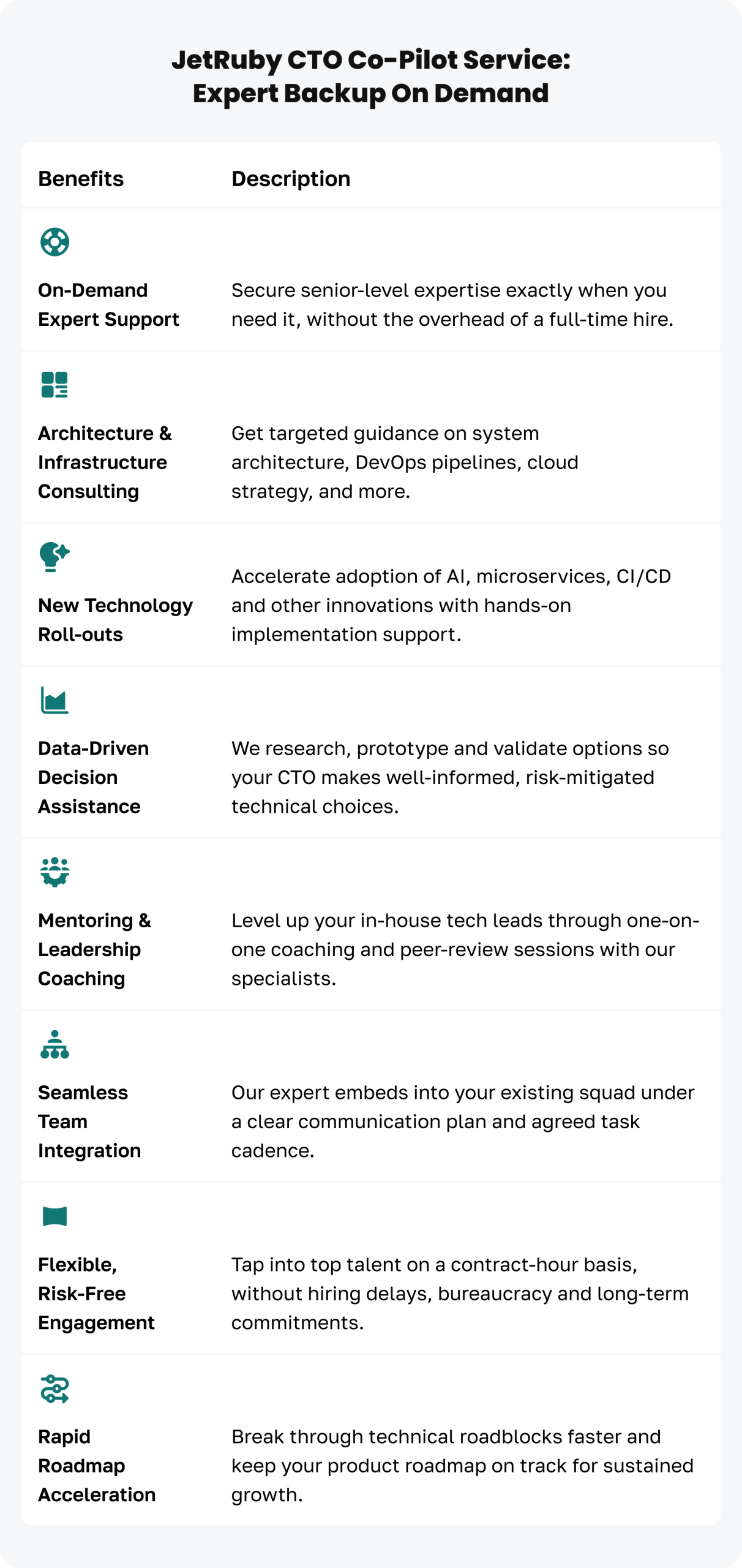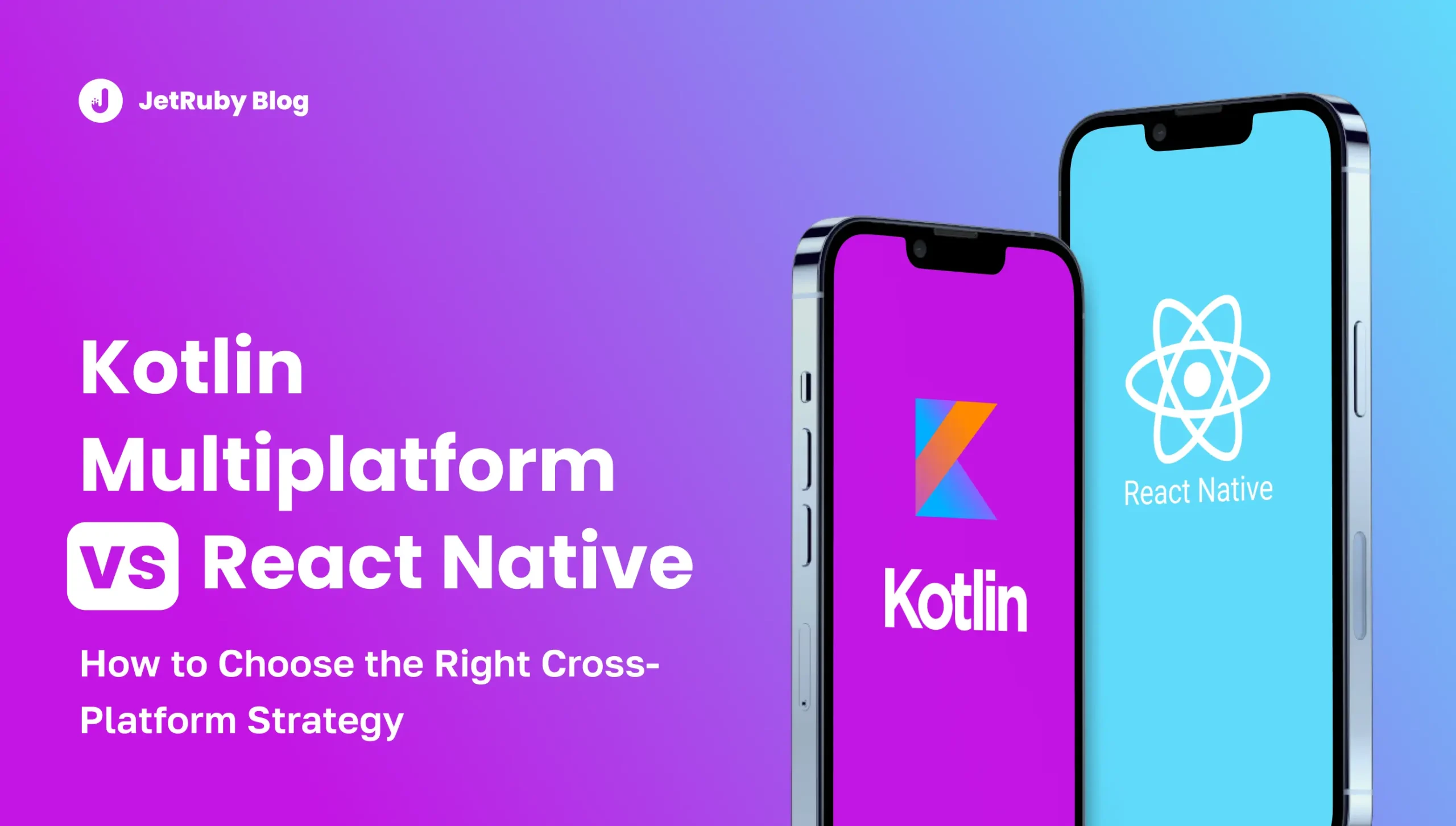Table of Contents
Can artificial intelligence tame the unpredictability of farming? The AI agriculture market is on track to rocket from $1.7 billion in 2023 to $4.7 billion by 2028, compounding at roughly 23% a year. These numbers confirm that Artificial intelligence in agriculture is shifting from pilots to full-scale production.
Today’s agri leaders are asking: how can AI transform the way we grow food?
Below are four succinct examples of how AI is already leveraging data to drive decisive actions across AgriTech sites, from fields and greenhouses to fish farms and livestock operations, and throughout the entire value chain:
- Precision Irrigation Control: AI analyzes real-time soil moisture and weather data to autonomously adjust irrigation schedules on fields and greenhouses, maximizing water efficiency and crop health — a hallmark of precision agriculture and smart farming.
- Early Disease and Pest Detection: Machine-learning models process multispectral drone imagery over crop sites and greenhouses to identify disease outbreaks or pest infestations at their inception. It enables minimizing yield loss, showcasing the application of AI in agriculture.
- Aquaculture Feed Optimization: AI applications in agriculture ingest water quality metrics and fish growth data from sensor-equipped fish farms to predict optimal feeding regimes — a bright example of how AI can provide actionable insights.
- End-to-End Supply Chain Forecasting: Ag AI-driven demand-forecast models integrate harvest timelines, pricing, logistics, storage allocation, and distribution routes. It’s proof that AI tools now touch every link in food production.
Curious how we roll out practical automation on live projects? Check out How JetRuby Uses AI Task Automation or dig into the Top 20 AI task-automation routines we deploy most often.
Key Takeaways
- AI adoption is accelerating: The ag-tech market is set to hit $4.7B by 2028 (23% CAGR), making data-driven farming a strategic must-have for modern agriculture and underscoring the future of AI agriculture for any growth-minded farm.
- High-impact use cases: Precision irrigation, early pest/disease detection, aquaculture feed tuning, and AI supply-chain forecasting already deliver rapid ROI.
- Hard numbers matter: Early adopters see 10-15% higher yields, 20-30% water savings, 15-25% fertilizer costs, and 25-35% lower labor costs — benefits that AI can support at.
- Proven at scale: JetRuby’s OSRAM urban-farm platform lifted yields 32%, while its AI poultry system hits >80% real-time detection accuracy across thousands of birds.
- Strategic edge: Embedding AI now secures cost efficiency, sustainability gains, and climate resilience before the core role of AI in agriculture becomes table stakes.
Challenges Facing the Farming Industry
Despite advances in agricultural practices, traditional farming continues to face regular challenges that limit operational efficiency, yield stability, and profitability. These obstacles are becoming increasingly pronounced as global food demand grows and climate variability intensifies.
Below are some of the most critical issues:
- Unpredictable Weather and Yield Instability: Climate change has made weather patterns erratic, causing inconsistent crop performance. Farmers without advanced forecasting tools and sustainable agriculture can lose up to 25% of their harvest annually due to adverse weather events.
- Rising Input Costs: The cost of essential agricultural inputs such as fertilizers, irrigation water, and fuel has surged in recent years. These inputs often represent a major share of a farm’s operating expenses, directly impacting margins and limiting scalability.
- Excessive Water and Fertilizer Use: Agriculture accounts for approximately 70% of global freshwater consumption. Without precision tools, water and fertilizer are frequently over-applied, leading to waste, environmental degradation, and reduced long-term soil health.
- Labor Shortages and Skill Gaps: A growing shortage of skilled agricultural labor worldwide. Many farms struggle to recruit and retain qualified workers, resulting in delays and suboptimal field management. Not to mention that recruiting qualified hands is harder than ever. For retention tips, see our Top 13 Steps to Reduce Employee Turnover.
- Outdated Field Monitoring Practices: Manual scouting and infrequent inspections are prone to human error. This often misses early signs of diseases, pests, and nutrient deficiencies, which can escalate rapidly.
- Intuition-Based Decision Making: Many day-to-day farm decisions are still made based on gut feeling rather than data. This approach lacks the precision and consistency needed in a high-stakes, variable environment, leading to avoidable losses and underperformance.
Key Benefits of AI In Agriculture
Below are the core benefits of integrating AI into modern farming. Each technology tackles the pain points above, turning resource-intensive workflows into data-driven processes.
Pro Tip: Looking to build a full-stack intelligence layer for your farm? Start with our guide on How to Build a Smart AI Assistant in 8 Key Steps.
Agriculture AI: Yield Forecasting and Crop Planning
Farmers face high financial risk when harvests underperform due to variable weather and soil. AI for agriculture forecasting uses machine learning on historical yields, real-time weather, and soil data to predict outcomes within a 5% margin of error.
With forecasts, growers adjust planting schedules, field layouts, and resource orders. Early adopters report 10–15% yield gains and lower underperformance risk. AI stabilizes output, protects margins, and enables confident planning under variable climates.
Precision Resource Management (Water and Fertilizer Efficiency) Used by AI Farms
Water and fertilizer are costly inputs and harm the environment if overused. AI systems use soil sensors, satellite imagery, and forecasts to assess real-time crop needs. JetRuby’s models fine-tune fertilizer rates per zone, giving each plant precise care.
Studies show AI can cut water use by 20–30% and fertilizer use by 15–25%, without sacrificing yield. Automated irrigation adjusts in real time to soil and plant conditions. This slashes costs and minimizes environmental impact through smarter, cleaner resource use, enabling truly innovative farming.
AI Farming Technology for Early Pest and Disease Detection
AI-powered computer vision enables early detection of pests and diseases, before symptoms are visible. Drones and cameras capture high-res images across farms. Neural networks analyze these at the leaf level, spotting tiny signs that are often missed by the human eye.
AI platforms flag outbreaks early and enable targeted actions like spot spraying or biocontrols. This reduces reliance on broad pesticide use and prevents large-scale crop damage. Trials showed 20–40% lower crop losses and improved sustainability and product quality.
Farmer AI: Data-Driven Decision Making
AI platforms unify fragmented datasets, from weather feeds and IoT sensors to financials and market trends into a single, actionable dashboard. With the power of analytical AI and Gen AI, these systems provide clear and prioritized recommendations for field operations, procurement, storage, etc.
By automating data integration and surfacing key insights, growers can respond faster and with greater precision. This empowers timely decisions in planting, irrigation, and marketing, reducing waste and increasing impact.
Real-Time Crop Monitoring with Drones and Sensors — One of the Key AI Applications in Agriculture
Continuous field surveillance using drones, satellites, and IoT sensors delivers real-time insights far beyond traditional scouting. Drones capture high-res aerial imagery, while satellites map crop health across large areas.
Soil and plant sensors transmit live data on moisture, nutrients, and microclimate conditions. AI engines analyze it all instantly, flagging anomalies like moisture stress or early disease, long before symptoms appear.
By maintaining constant vigilance, growers can act instantly, whether through targeted irrigation, spot pathogen treatment, or pest control. This creates a truly “smart” farming system that minimizes losses, optimizes resource use, and sustains peak crop performance.
Automation and Labor Efficiency Powered by Machine Learning in Agriculture
AI Agriculture robotics and autonomous machinery automate labor-intensive tasks like planting, weeding, spraying, and harvesting with high precision. Driverless tractors and smart robots scout fields, detect issues, and apply targeted treatments without human intervention.
Deploying these technologies cuts labor costs by 25–35% and eases workforce shortages. Workers move from repetitive routines to higher-value tasks like monitoring and analysis. This shift lowers expenses, boosts productivity, and reduces errors and downtime.
Sustainable Farming and Environmental Impact — Advantages of AI in Agriculture
AI-driven precision agriculture cuts input costs and reduces environmental impact. It matches irrigation and fertilizer precisely to crop needs, limiting runoff and chemical leaching.
AI for agriculture watering systems adjust in real time to conserve water, while machine learning optimizes nutrient delivery to minimize pollution.
Beyond resource efficiency, AI-driven sustainability is a core business value. Measurable cuts in water use, fertilizer runoff, and emissions boost a farm’s ESG profile. This strengthens market appeal to eco-conscious buyers and investors, making farming cleaner, more responsible, and future-focused.
Climate Resilience and Risk Mitigation with AI farming
AI-driven analytics use historical yields, climate models, and real-time forecasts to assess agronomic risks. ML models help prevent crop losses by spotting vulnerability windows like droughts or frosts. They recommend adaptive strategies to protect your fields before extreme events hit.
These systems advise on optimal planting, irrigation, and fertilizer timing based on weather probabilities. This gives your farm a “data-backed insurance policy” against volatility and climate surprises. By embedding resilience into planning, you stabilize revenue and safeguard your business long term.
Livestock Monitoring and Health Management Technology for Farmers
Precision Livestock Farming uses smart sensors, video analytics, and wearable IoT devices to monitor animal behavior, physiology, and conditions continuously. Computer vision tracks movement and distress signs, while biometric sensors measure temperature, rumination, and feed intake in real time.
Advanced AI for agriculture analytics flag anomalies like reduced appetite, elevated temperature, or altered gait and prompt early intervention. AI-driven feeding platforms adjust rations and schedules based on animal growth, cutting feed costs by 5–10% and boosting weight gain, which improves herd productivity and welfare.
Elevate with CTO Co-Pilot Elevate your development with our CTO Co-Pilot! Get expert support, AI audits, cost analysis, and a detailed implementation plan - or let us handle full implementation.
Case Study: OSRAM Urban Farming Platform — Harnessing AI AgriTech for Urban Farms
We partnered with OSRAM to create a cutting-edge, scalable platform for automated urban farming based on AI technologies. The goal was to bring real-time visibility and AI Agriculture control to every stage of the cultivation process.
Under the hood, the platform’s backend is built with Ruby on Rails, a framework we rely on for rapid, reliable SaaS delivery. If you’d like to understand why Rails is our framework of choice for data‑heavy SaaS products, explore our article 9 Reasons Why Ruby on Rails Is Perfect for SaaS.
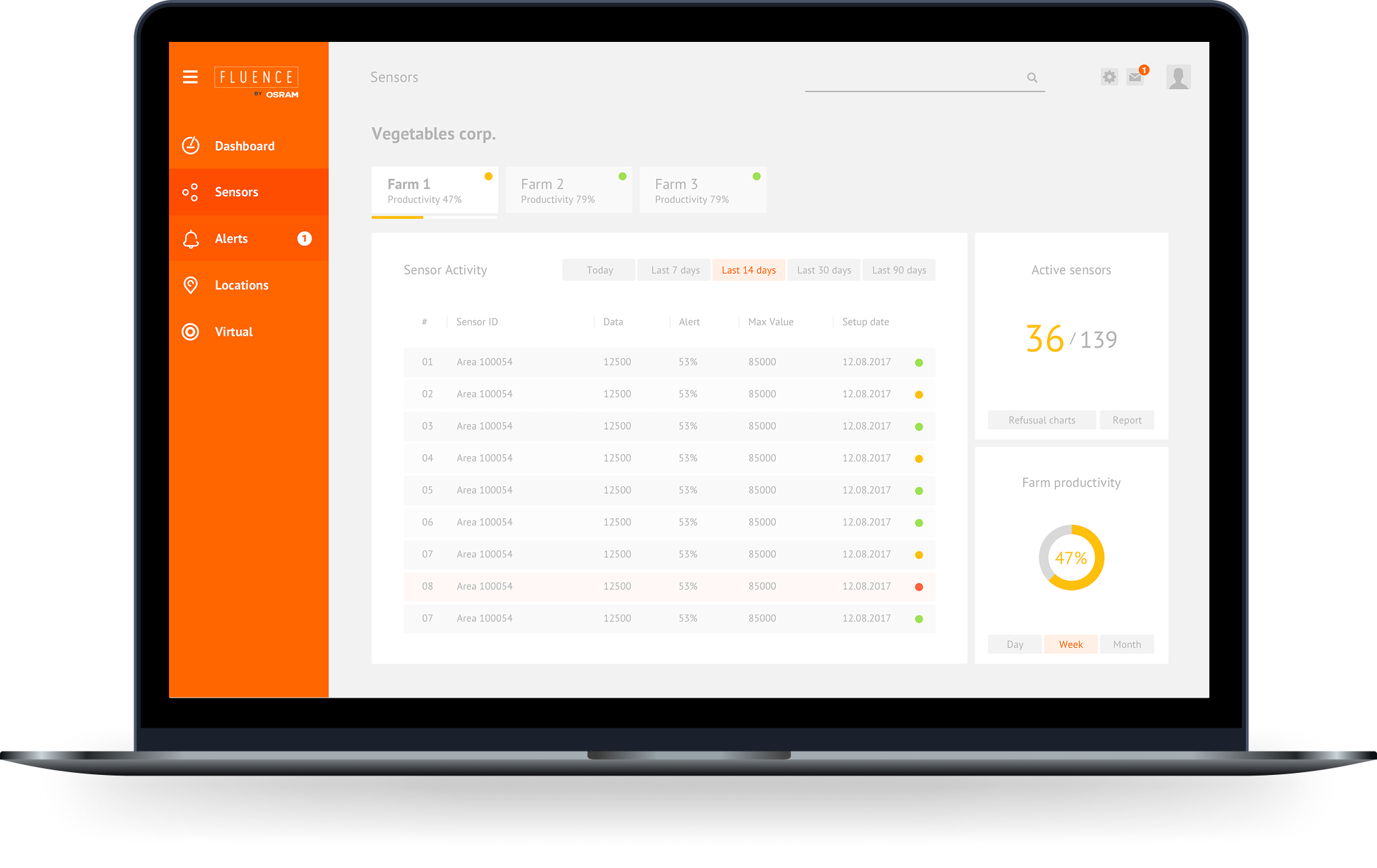
Challenges OSRAM Faced
OSRAM needed a scalable, user-friendly platform to manage urban farms with real-time insights into soil health, microclimate, crop growth, machinery performance, and energy usage. Manual, siloed monitoring was labor-intensive and lacked the precision required for consistent, high-quality yields.
Our Approach to Integrating AI in Agriculture
We built an IoT and AI-enabled platform that automates sensor data collection, cloud processing, and delivers insights via a web dashboard. We installed environmental and crop-health sensors, a serverless AWS backend for analytics, and an IoT Device Simulator for swift onboarding.
Results Achieved Through the Use of AI in Agriculture
Quality matters at scale — learn how AI code review enhances Ruby on Rails projects like this one.
Case Study: AI Farming for Early Detection of Poultry Diseases
We built an end-to-end cloud-native AI agriculture stack. An IoT and AI system that monitors poultry-house air for bacterial pathogens.
Using low-cost sensors, custom ML pipelines, and a simple dashboard, it delivers real-time alerts, proving how AI can provide early warnings that save flocks and margins.
Challenges Farmers Face During Poultry Disease Detection
Traditional bacterial culture tests take 4–10 days for results, during which infections can decimate a flock and jeopardize worker safety. Detecting disease purely from airborne microbial concentrations had never been attempted at scale and required:
Our Solution: Real-Time AI-Enhanced Poultry Pathogen Monitoring
We installed calibrated air-quality sensors above the flock, measuring temperature, humidity, VOCs, CO/CO2, and airflow. Data fed MLflow- and Azure-powered pipelines for analysis and fuzzy-logic classification. These models flagged pathogen spikes of 10 to 80 million cells in real time.
A serverless cloud backend ingested data while a web interface showed trends and sent instant alerts. Ongoing R&D with microbiologists kept models and sensors precise in changing conditions. This enabled fast detection and response to pathogen threats on site.
Results of Implementing Artificial Intelligence in Farming
JetRuby CTO Co-Pilot Service: Expert Backup on Demand
When your AgriTech plans call for sharp AI, IoT, or cloud skills, JetRuby’s CTO Co-Pilot plugs in as your instant tech ally. Our senior experts join your crew on demand, working shoulder-to-shoulder with your existing CTO and filling critical gaps without adding another full-time executive seat.
Each CTO Co-Pilot engagement starts with a fast, focused audit that uncovers immediate risks and low-hanging wins. We map out scope, budget, and timeline, then embed our expert alongside your CTO and developers for seamless collaboration.
Pro Tip: Before you hire or upskill a tech leader, check out What Is a CTO? Unveiling the Truth About CTO Meaning in Business to set clear expectations.
Together, we align on architecture, implement critical features, and benchmark performance until your key metrics stabilize. Once systems are operating smoothly, your team continues forward, fortified with new skills and best practices.
Ready to Cultivate Innovation?
Move beyond pilots and embed AI solutions for agriculture at scale, leveraging AI, IoT, and advanced analytics to integrate them deeply into your farming operations. Reach out via our Contact Us form to schedule a discovery call, outline your AgriTech challenges, and co-create a tailored CTO Co-Pilot engagement plan with JetRuby today.
